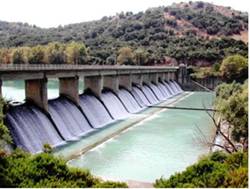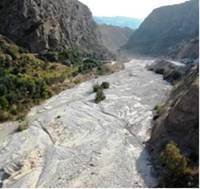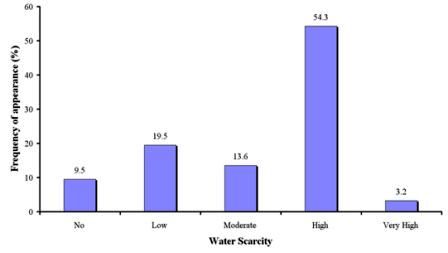Water scarcity
This indicator assesses the change in the difference between the water availability per capita and the water consumption per capita during the past 10 years. The change in water scarcity can be affected both on the increased consumption and/or decrease in supply. Scarcity, by definition means diminishing resources (for example due to climate change) and/or a pressure on the supply of available resources from an increasing demand (Fig. 91). The water consumption per capita includes the total demands for drinking water, process water, irrigation water and cooling water by all economic sectors, expressed in cubic metres per year per capita. The World Health Organization uses the level of 1,000-2,000 cubic meters per person per year to identify risk on water scarcity. When these values drop below 1,000 cubic meters per person per year, then areas are considered as experiencing water scarcity.


Fig. 91. Water resources used for human consumption (left) but under dry climatic conditions and disappearing of surface water then water (right) scarcity becomes a major issue
This indicator has been defined for this project as the ratio of water availability per capita (WAC) divided by the water consumption per capita (WCC) per year for the period of the past ten years. The following 5 classes have been identified: (a) no water scarcity, WAC/WCC=R>2; (b) low, R=1.5-2; (c) moderate, R=1.5-1.0; (d) high, R=0.5-1.0, and (e) very high R<0.5.
As Table 12 shows, data for this indicator were defined for 656 study field sites, corresponding to 10 study sites. The analysis of the data showed that the main class of water scarcity is high, covering 54.3% of the study sites, and corresponding to all field sites of Djanybek-Russia, Eskisehir-Turkey, and Konya Karapinar plain-Turkey, and in some cases in the study sites of Boteti Area-Botswana, Cointzio Catchment-Mexico, and Crete-Greece (Fig. 92). The next important class of water scarcity is low, covering 19.5% of the study field sites, corresponding to all study field sites of Novij Saratov-Russia, and is some cases in the study sites of Boteti Area-Botswana, Cointzio Catchment-Mexico, and Crete-Greece. Moderate water scarcity class has been defined in 13.6% of the study field sites, corresponding to some cases of the study sites of Boteti Area-Botswana, Nestos Basin Maggana-Greece, Cointzio Catchment-Mexico, and Crete-Greece. No water scarcity has been defined in 9.5% of the study sites, corresponding to Mação- Portugal, and Gois-Portugal study sites. Finally, very high water scarcity has been defined in the study field sites of Mação-Portugal site since the study sites are exclusively located in forested areas.

Fig. 92. Distribution of water scarcity classes identified in the study field sites